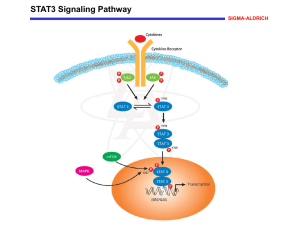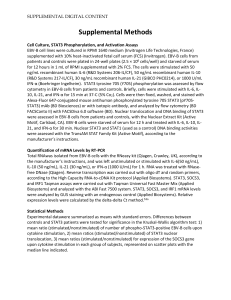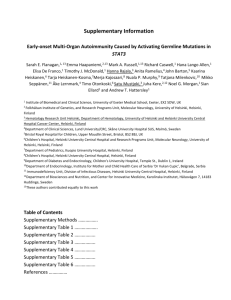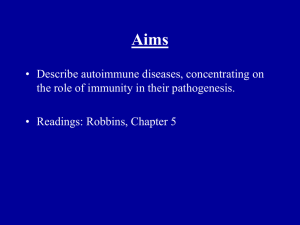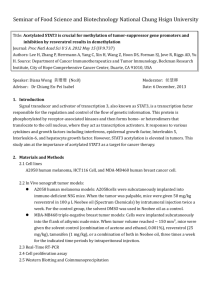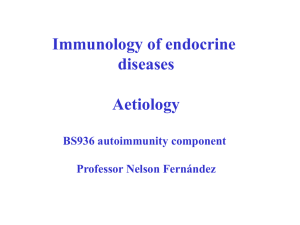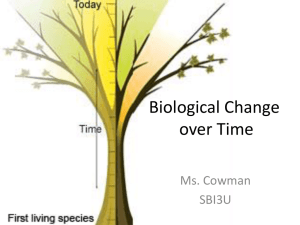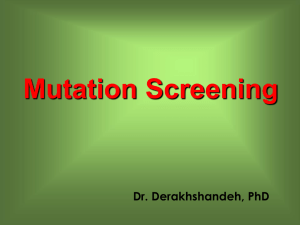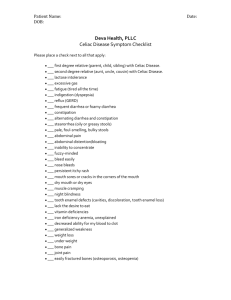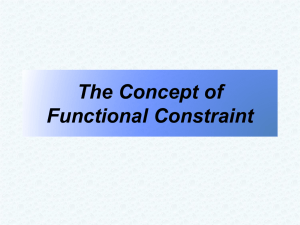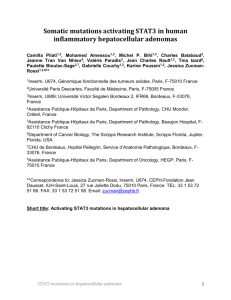Flanagan_Manuscript final_R1
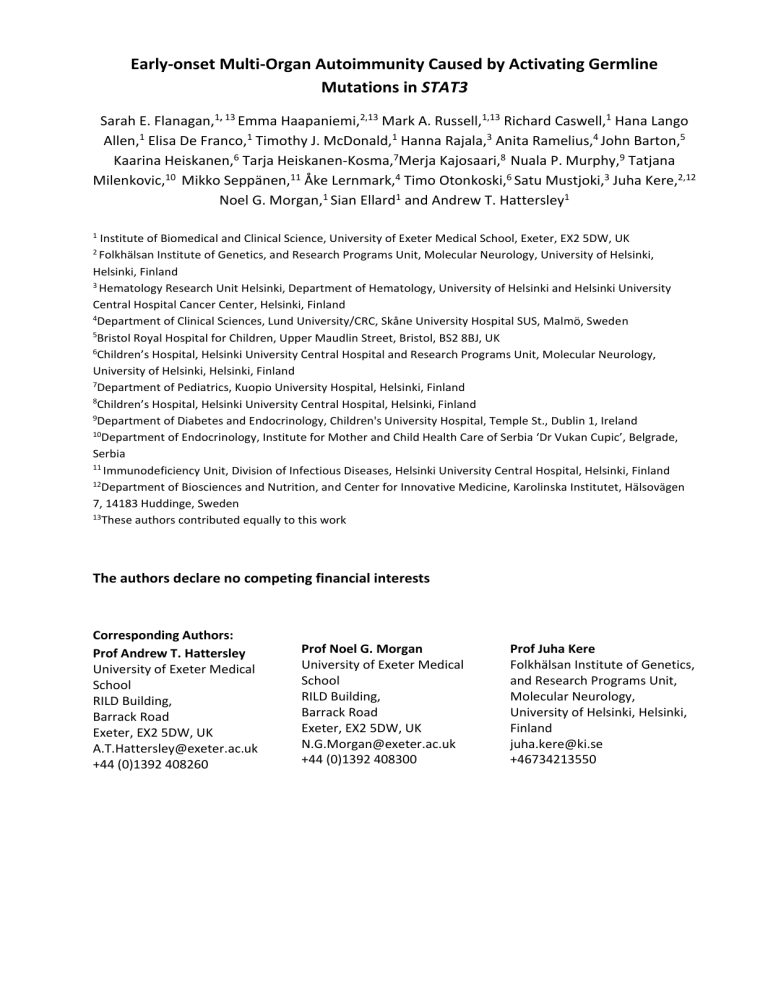
Early-onset Multi-Organ Autoimmunity Caused by Activating Germline
Mutations in STAT3
Sarah E. Flanagan, 1, 13 Emma Haapaniemi, 2,13 Mark A. Russell, 1,13 Richard Caswell, 1 Hana Lango
Allen, 1 Elisa De Franco, 1 Timothy J. McDonald, 1 Hanna Rajala, 3 Anita Ramelius, 4 John Barton, 5
Kaarina Heiskanen, 6 Tarja Heiskanen-Kosma, 7 Merja Kajosaari, 8 Nuala P. Murphy, 9 Tatjana
Milenkovic, 10 Mikko Seppänen, 11 Åke Lernmark, 4 Timo Otonkoski, 6 Satu Mustjoki, 3 Juha Kere, 2,12
Noel G. Morgan, 1 Sian Ellard 1 and Andrew T. Hattersley 1
1 Institute of Biomedical and Clinical Science, University of Exeter Medical School, Exeter, EX2 5DW, UK
2 Folkhälsan Institute of Genetics, and Research Programs Unit, Molecular Neurology, University of Helsinki,
Helsinki, Finland
3 Hematology Research Unit Helsinki, Department of Hematology, University of Helsinki and Helsinki University
Central Hospital Cancer Center, Helsinki, Finland
4 Department of Clinical Sciences, Lund University/CRC, Skåne University Hospital SUS, Malmö, Sweden
5 Bristol Royal Hospital for Children, Upper Maudlin Street, Bristol, BS2 8BJ, UK
6 Children’s Hospital, Helsinki University Central Hospital and Research Programs Unit, Molecular Neurology,
University of Helsinki, Helsinki, Finland
7 Department of Pediatrics, Kuopio University Hospital, Helsinki, Finland
8 Children’s Hospital, Helsinki University Central Hospital, Helsinki, Finland
9 Department of Diabetes and Endocrinology, Children's University Hospital, Temple St., Dublin 1, Ireland
10 Department of Endocrinology, Institute for Mother and Child Health Care of Serbia ‘Dr Vukan Cupic’, Belgrade,
Serbia
11 Immunodeficiency Unit, Division of Infectious Diseases, Helsinki University Central Hospital, Helsinki, Finland
12 Department of Biosciences and Nutrition, and Center for Innovative Medicine, Karolinska Institutet, Hälsovägen
7, 14183 Huddinge, Sweden
13 These authors contributed equally to this work
The authors declare no competing financial interests
Corresponding Authors:
Prof Andrew T. Hattersley
University of Exeter Medical
School
RILD Building,
Barrack Road
Exeter, EX2 5DW, UK
A.T.Hattersley@exeter.ac.uk
+44 (0)1392 408260
Prof Noel G. Morgan
University of Exeter Medical
School
RILD Building,
Barrack Road
Exeter, EX2 5DW, UK
N.G.Morgan@exeter.ac.uk
+44 (0)1392 408300
Prof Juha Kere
Folkhälsan Institute of Genetics, and Research Programs Unit,
Molecular Neurology,
University of Helsinki, Helsinki,
Finland juha.kere@ki.se
+46734213550
Monogenic causes of autoimmunity give key insights to the complex regulation of the immune system. We report a new monogenic cause of autoimmunity resulting from de novo germline activating STAT3 mutations in 5 individuals with a spectrum of early-onset autoimmune disease including type 1 diabetes. These findings emphasise the critical role of
STAT3 in autoimmune disease and contrast with the germline inactivating STAT3 mutations that result in Hyper IgE syndrome.
Autoimmune disorders are usually multifactorial in aetiology, involving a combination of the background risk due to an individual’s genetic make-up and environmental exposure.
Considerable advances in understanding the genetic susceptibility to autoimmune disease have identified common and disease specific polymorphisms in the Human Leukocyte Antigen (HLA) region and throughout the genome.
1-4 Rarely monogenic defects can explain specific clustering of autoimmune conditions and give important biological insights.
5-8
Type 1 diabetes (T1D) can occur in association with other autoimmune conditions because of a shared polygenic predisposition or rarely as part of a monogenic polyautoimmune disorder.
T1D is a common feature of Immunodysregulation, Polyendocrinopathy, Enteropathy X-linked
(IPEX) syndrome due to FOXP3 mutations and Autoimmune Polyendocrinopathy Syndrome 1
(APS1) due to recessive mutations in AIRE.
5,6 In these polyendocrinopathy syndromes the
autoimmune disease has a very young age of onset with T1D usually diagnosed before 3 months in IPEX syndrome 9 which is in contrast to polygenic T1D that is very rare before 6 months.
10 Investigation of individuals with early-onset multiple autoimmune features may therefore reveal novel monogenic causes of autoimmunity.
We initially searched for a de novo mutation in an individual with early-onset polyautoimmunity
( T1D(2wks), autoimmune hypothyroidism(3yrs), coeliac disease(17months)), by exome sequencing and comparison with variants identified in the unaffected parents.
11 Heterozygous variants called using the Genome Analysis Tool Kit were filtered by removing non-coding or synonymous variants, those in dbSNP131 or 1000 Genomes Project databases and variants identified in either parent (Supplementary methods). This reduced the number of potentially pathogenic de novo mutations to a single novel heterozygous missense substitution, p.Thr716Met (c.2147C>T), in the transactivation domain of STAT3 (Supplementary Table 1).
Sequencing of the STAT3 coding exons was performed in i) 24 individuals with >2 early-onset
(diagnosis <5years) autoimmune disorders of unknown cause and ii) 39 individuals with isolated
permanent diabetes diagnosed <6 months, aged <5 years at referral, and with 20 known causes of neonatal diabetes excluded (Supplementary methods, Supplementary Table 2). We identified 3 different heterozygous missense substitutions (p.K392R, p.N646K, p.K658N) in 4 individuals (3 polyautoimmune disease,1 isolated permanent neonatal diabetes aged 3 yrs).
Analysis of parental DNA samples established that all mutations had arisen de novo
(Supplementary Methods). With the exception of p.K658N, which has been reported as a somatic mutation causing Large Granular Lymphocytic (LGL) Leukaemia 12 , all mutations were novel and absent in 1000 Genomes and NHLBI exome databases. All substitutions affect highly conserved residues within the SH2, transactivation or DNA binding domains (Fig 1a). The finding of a spontaneous mutation in 5 individuals with early-onset autoimmunity provides overwhelming genetic evidence that these are disease causing mutations.
The activity of each mutation was assessed using a STAT3-responsive dual luciferase reporter assay (Supplementary methods). The 4 different STAT3 mutations identified in individuals with polyautoimmune disease, 2 dominant negative Hyper IgE mutations, and wild-type protein were generated and transiently transfected into cultured HEK293 cells. Western blotting confirmed that the expression of STAT3 was equivalent upon transfection of each construct
(Supplementary Fig. 1) Under non-stimulated (basal) conditions all 4 novel STAT3 mutations resulted in an increase in reporter activity compared to wild-type or the Hyper IgE inactivating mutations (Fig 1b). 3 of the 4 mutations also showed a less marked increase relative to wildtype when IL-6 stimulated: for the p.N646K mutation, the least activating of the mutations tested, although there is a significant increase in reporter activity under non-stimulated (basal) conditions there is not an increase above wild type when IL-6 stimulated (Fig 1b). To establish underlying cytokine-related gain-of-function we performed FACS for two patients (mutations p.K658N and p.K392R). Both showed reduced regulatory T-cell numbers and increased cytokine production (IFN-γ and TNF) in CD4+ cells at baseline and in response to stimulation. This provides evidence for enhanced Th1 response in vivo (data not shown). These functional studies support that all of the mutations causing polyautoimmune disease are activating and lead to increased basal STAT3 activity in vitro.
The diabetes (4/5 individuals) presented early (2.5 [0-43] weeks (median [range])) and was insulin treated from diagnosis in doses required for total endogenous insulin deficiency. Three of these 4 patients had detectable islet autoantibodies for T1D (Supplementary Table 5) supporting an autoimmune aetiology. Autoimmune destruction of beta cells starting during fetal life is suggested by intra-uterine growth retardation, a likely consequence of reduced
insulin secretion in utero, and early-onset diabetes (≤3 weeks). Additional autoimmune conditions diagnosed during childhood included autoimmune enteropathy, autoimmune interstitial lung disease, juvenile-onset arthritis and primary hypothyroidism. Other common features were short stature (5/5 (<2SDS)) and eczema (4/5) (Supplementary Table 5). The young age at diagnosis of the autoimmune features is consistent with STAT3 mutations causing accelerated autoimmune disease.
The Signal Transducer and Activator of Transcription (STAT) factors are involved in multiple processes, including early development, cellular proliferation, survival and differentiation. It is likely that STAT3 activation leads to autoimmunity through expansion and activation of Th17
Germline dominant-negative STAT3 mutations in patients with Hyper-IgE syndrome cause a primary immunodeficiency disorder characterised by elevated serum IgE and recurrent
staphylococcal infections due to deficiency of Th17 cells.
16,17 The multiple autoimmune features
observed in our cohort with germline activating STAT3 mutations is in contrast to the severe immunodeficiency observed in individuals with the Hyper IgE syndrome (Fig 2a).
Somatic activating STAT3 mutations have been reported in 40% of individuals with LGL leukaemia 12 and 8% of inflammatory hepatocellular adenomas.
18 The primary presentation of
LGL-leukaemia is recurrent bacterial infections, fatigue, and weight loss typically in the 6 th decade of life. These individuals frequently (26%) have adult-onset rheumatoid arthritis but diabetes or other autoimmune disease is not reported.
12 Therefore different phenotypes result from somatic and germline mutations
Common variation in STAT3 is associated with autoimmune disease with single nucleotide polymorphisms conferring altered susceptibility to Crohn’s disease 3 , psoriasis 19 ; and multiple sclerosis 20 but interestingly these conditions were not seen in our patient series. Suggestive associations were seen in T1D and rheumatoid arthritis but did not reach genome-wide
21,22 Further studies investigating the role of rare-coding variants in susceptibility to
common organ-specific autoimmune disease are warranted.
STAT3 associated polyautoimmunity has a different, but overlapping, clinical phenotype from the 4 previously described monogenic autoimmune syndromes (Supplementary table 6).
5-8
Whilst these disorders are extremely rare they offer valuable insights into the biology of the
immune system in T1D and other related autoimmune disease. Further large scale sequencing efforts of individuals with multiple early-onset autoimmune disorders are required to identify novel monogenic conditions which will shed further light on the complex regulation of the adaptive immune response.
Acknowledgements
The authors thank John Chilton, Annet Damhuis, Rahul Raman and Bingmei Yang for technical assistance. This work was supported by NIHR Exeter Clinical Research Facility through funding for SE and ATH. SE and ATH are supported by Wellcome Trust Senior Investigator awards.
Funding was provided by Diabetes UK and The Finnish Medical Foundation.
Author Contributions
S.E.F., S.E., and A.T.H. designed the study. N.P.H., T.M., T.O., E.H., K.H., T.H-K., M.K. and J.B. recruited patients to the study. R.C. and E.D.F. performed the exome sequencing and targeted next generation sequence analysis. H.L.A. did the bioinformatic analysis. S.E.F. and E.H. did the
Sanger sequencing analysis and the interpretation of the resulting data. S.E.F., T.J.M., E.H. M.S.,
J.K. and A.T.H. analysed the clinical data. M.A.R. and N.G.M. designed and performed the functional studies. HR and SM performed FACS analysis. S.E.F., M.A.R. and A.T.H. prepared the draft manuscript. All authors contributed to discussion of the results and to manuscript preparation.
Figure Legends
1.
a) Schematic representation of STAT3 (adapted from 23
) . The positions of the 4 different
de novo mutations identified in 5 individuals with the polyautoimmune syndrome are shown below the STAT3 domains. The highly conserved sequence at the position of each mutation is provided for various species.
b) STAT3 activity of polyautoimmune mutants under i) non-stimulated and ii) IL-6
(20ng/ml) stimulated conditions. The STAT3 reporter activity of 4 polyautoimmune mutants (p.K392R, p.N646K, p.K658N, p.T716M) was examined alongside that of 2 previously described Hyper-IgE mutations (p.R382W, p.V637M) 23 and the wildtype (WT) following transient transfection into HEK293 cells. The dotted line indicates the activity of the WT under either basal (i) or IL-6 stimulated (ii) conditions. Data are presented as an average fold change relative to WT (n≥3) under each experimental condition.
Typically, IL-6 caused a 20-30-fold increase in activity above basal in cells transfected with WT STAT3.*p<0.05,**p<0.01, ***p<0.001.
2.
Clinical characteristics associated with activating germline STAT3 mutations causing the polyautoimmune syndrome and inactivating germline mutations causing Hyper IgE syndrome.
24
References
15
16
17
18
19
20
21
22
23
24
8
9
10
11
12
13
14
5
6
7
1
2
3
4
Barrett, J. C. et al. Nat Genet 41, 703-707 (2009).
Dubois, P. C. et al. Nat Genet 42, 295-302 (2010).
Barrett, J. C. et al. Nat Genet 40, 955-962 (2008).
Stahl, E. A. et al. Nat Genet 42, 508-514, (2010).
Bennett, C. L. et al. Nat Genet 27, 20-21(2001).
Finnish-German APECED Consortium. Nat Genet 17, 399-403 (1997).
Lohr, N. J. et al.. Am J Hum Genet 86, 447-453 (2010).
Sharfe, N. et al. Proc Natl Acad Sci U S A 94, 3168-3171 (1997).
Rubio-Cabezas, O. et al. Diabetes Care 32, 111-116 (2009).
Edghill, E. L. et al. Diabetes 55, 1895-1898 (2006).
Lango Allen, H. et al. Nat Genet 44, 20-22 (2012).
Koskela, H. L. et al. N Engl J Med 366, 1905-1913 (2012).
Yang, X. O. et al. J Biol Chem 282, 9358-9363 (2007).
Harris, T. J. et al. J Immunol 179, 4313-4317 (2007).
Shao, S. et al. Cell Immunol 280, 16-21 (2012).
Ma, C. S. et al. J Exp Med 205, 1551-1557 (2008).
Minegishi, Y. et al. Nature 448, 1058-1062 (2007).
Pilati, C. et al. J Exp Med 208, 1359-1366 (2011).
Tsoi, L. C. et al. Nat Genet 44, 1341-1348 (2012).
Jakkula, E. et al. Am J Hum Genet 86, 285-291 (2010).
Fung, E. Y. et al. Genes Immun 10, 188-191 (2009).
Seddighzadeh, M. et al. J Rheumatol 39, 1509-1516 (2012).
Holland, S. M. et al. N Engl J Med 357, 1608-1619 (2007).
Heimall, J. et al. Clin Immunol 139, 75-84 (2011).
